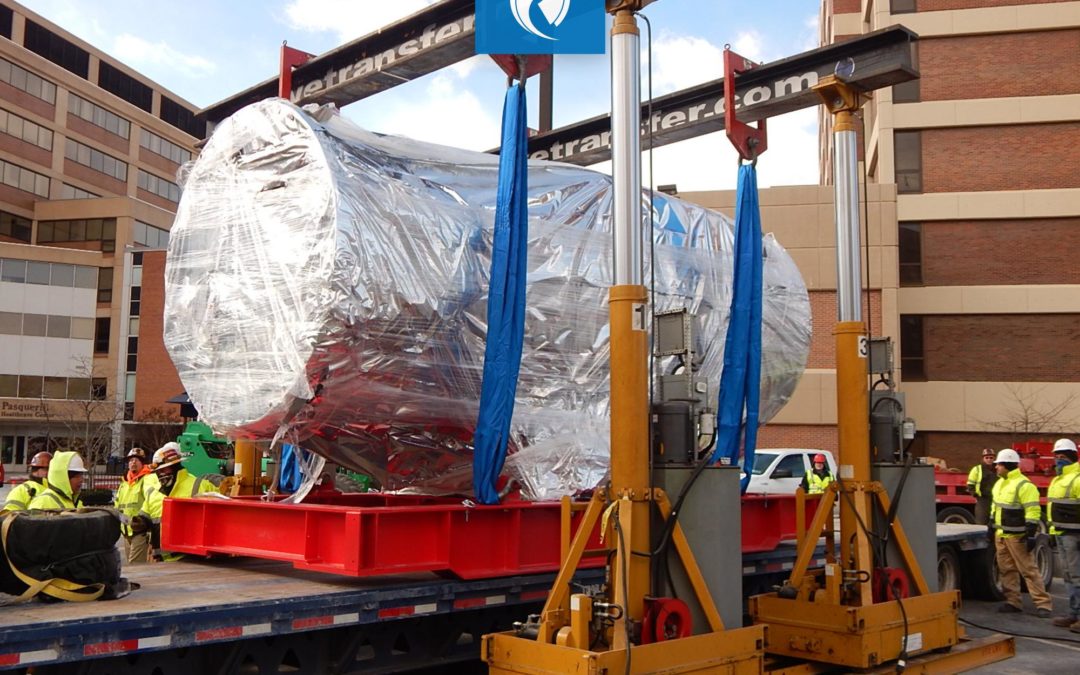When you are moving heavy equipment, there are many things that must be considered. One such consideration is which types of rigging equipment to use. There are many different types of rigging equipment that can be used to move heavy equipment, and which type is needed depends on your specific job. Every rigging job is different, so extensive knowledge of rigging tools and practices is a must. Here is a list of some of the most important and most frequently used rigging equipment.
Rigging Hooks
Rigging hooks are used when heavy equipment needs to be lifted. These hooks are designed to eliminate the risk of slippage, and they are typically made from steel. Rigging hooks can come in different designs and sizes for lifting different types of loads. They are categorized based on the size of their hook opening, also called throat, and these sizes can range from 5/8 of an inch to 1 17/32 inches. Some of the different types of rigging hooks include sorting, clevis grab, eye, and choker.
Pulleys and Blocks
Pulleys and lifting blocks are used when very heavy objects need to be lifted. These devices reduce the amount of force that is necessary for lifting and moving heavy equipment. There are a few different types of lifting blocks, including snatch blocks, swivel blocks, square blocks, and tilt-up blocks. Lifting blocks come in a variety of sizes and can carry loads that weigh up to 30 tons. There are both single and double pulley systems, and they are used with rigging ropes that circle the pulley and are then hooked to heavy objects for lifting. Pulleys vary based on frame, rope, and sheave size. Wire rope is often used with lifting blocks, while synthetic rope is typically used with pulleys. This is because lifting blocks usually carry heavier loads than pulleys, and wire rope can handle these heavier loads better.
Shackles
Shackles are connecting links that allow different types of rigging equipment to be quickly connected to and disconnected from one another. They are most often used with loads that weigh more than 6,000 pounds, and they can accommodate up to 11,000 pounds. There are two broad categories of shackles, anchor and chain, but both of these categories can also include different types of shackles: screw pin, safety, and round pin types. Shackles typically involve a loop of steel that is closed off with some type of pin, allowing for a secure connection between rigging equipment while moving heavy equipment. Shackles come in a variety of sizes, ranging from 3/16 of an inch to 2 1/2 inches.
Eye Bolts
Eye bolts act as anchor points in rigging configurations and are used for looping cables or ropes. They can come in a wide variety of different sizes and materials to accommodate different types and sizes of loads. Straight eye bolts and shoulder eye bolts are the two most common types. Straight eye bolts are used for straight line applications, while shoulder eye bolts are used with angular connections. Some other types of eye bolts include U-bolts, screw eye bolts, and lag eye screw bolts.
Steel Nuts
Stainless steel nuts are used along with eye bolts. The size that should be used depends on the weight of the load as well as its shape. Some of the most frequently used nuts in rigging are hex nuts, dome nuts, lifting eye nuts, ball ends, and wing nuts. This type of rigging equipment is usually made of type 316 stainless steel, and these nuts can typically be found in both RH and LH thread.
Wire Ropes and Accessories
Wire ropes are useful for rigging and moving heavy equipment. They are often fortified with multiple strands of either carbon steel wire or, more commonly, stainless steel wire, usually in a helix pattern for extra strength. Wire ropes can be coated or galvanized to protect them from the outdoor elements. They can come in multiple sizes and a variety of specifications. The most common wire ropes are 6×19, 6×36, 6×26, 7×7, and 7×19. Some of the accessories that are used in conjunction with wire ropes are thimbles, clips, sleeves, and stops. These rigging equipment accessories make the wire rope more functionable for rigging tasks.
Synthetic Lifting Slings
This type of rigging equipment is made of synthetic material. Synthetic slings are used along with wire ropes when moving heavy equipment. There are two types, endless slings and eye-and-eye slings. Endless slings are simply synthetic material in a loop, while eye-and-eye slings have triangular, flat, or twisted ends made of either metal or synthetic material. These slings help balance rigging jobs and add additional strength for bearing heavy loads.
Expert Rigging Company Near Me
During a rigging project, there are infinite opportunities for error and catastrophe. For this reason, an expert rigging company should be hired to handle your rigging needs. Rowe Transfer is a transportation company in Knoxville, TN, that specializes in rigging. Our team of experts have years of experience moving heavy equipment of all shapes and sizes. We can set up rigging apparatuses that enable us to safely move your heavy object, no matter the location. We know that there is a myriad of ways things can go wrong in rigging projects, so we take every precaution to make sure the job is done right. This includes utilizing the latest technology and rigging equipment for every job, as well as using out-of-the-box ingenuity to figure out the best way to complete your rigging project. You can trust Rowe Transfer with your next rigging project. Reach out to us today at 865-523-0421 or online.

